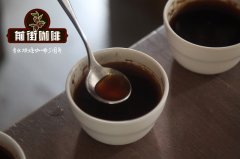The optimal extraction rate for a cup of coffee what are the normative guidelines for brewing coffee?

Professional coffee knowledge exchange more coffee bean information please follow the coffee workshop (Wechat official account cafe_style)
Gold cup theory
We already know that the main component of coffee grounds is cellulose, so in the process of turning coffee powder into coffee grounds, about 30% of the substance will be dissolved by water. The dissolved coffee substance accounts for the weight of all coffee powder, which we call the extraction rate. Of course, 30% is the upper limit of the extraction rate, and according to experience, about 20% of the extraction rate meets most people's definition of a good cup of coffee. When most baristas extract, they also want their coffee extraction rate to be around 20%.
And because the carrier of extraction is water, after determining the solute, the amount of water determines the concentration of coffee. To put it simply, it is the concentration of coffee substance in the coffee liquid. This value is generally thought to be between 1.2% muri 1.3% (in the United States) or 1.3% muri 1.45% (in Europe).
After the extraction of coffee, if the extraction rate is 20 ±2% and the concentration is 1.2% Mel 1.45%, it can be considered as a cup of coffee that meets the extraction requirements "technically". This requirement is known as the "Gold Cup".
This theory is the golden rule laid down by the famous SCAA (American Fine Coffee Association) and SCAE (European Fine Coffee Association). Moreover, this specification is not only applicable to hand-brewed coffee, but also a normative guiding standard for all coffee brewing.
Important Notice :
前街咖啡 FrontStreet Coffee has moved to new addredd:
FrontStreet Coffee Address: 315,Donghua East Road,GuangZhou
Tel:020 38364473
- Prev

Characteristics of Common Coffee processing methods Flavor expression of Coffee treatment
Professional coffee knowledge exchange more coffee bean information Please pay attention to the coffee workshop (Wechat official account cafe_style) Coffee fruit from outside to inside is: peel, pulp, pectin layer, hard shell, silver skin, coffee seeds, and what we end up drinking is the innermost coffee seed. If the ripe fruit is unprocessed, it will rot in a very short time, so it needs to be refined.
- Next

Where does coffee bitterness come from? What factors will produce coffee beans in the process of roasting and making
Professional coffee knowledge exchange More coffee bean information Please pay attention to coffee workshop (Weixin Official Accounts cafe_style) The most well-known bitter ingredient of coffee is caffeine, but the bitter taste brought by caffeine actually accounts for only 10% at most. This can be seen from the fact that roasted beans contain caffeine concentrations that are not affected by roasting, and decaffeinated coffee also has bitter tastes
Related
- What is the meaning of lactic acid fermentation with coffee bean treatment?
- How to judge the state of foam by sound?
- How does the latte pull out the unicorn pattern? Come to get for a little trick to improve the flower pull!
- Will flower pulling affect the taste of the latte?
- Do you know the history of coffee?
- The difference between honey treatment and sun washing what is raisin honey treatment?
- What kind of milk can a novice use to make coffee foam to keep the foam longer? The correct method and skills of milking tutorial sharing
- Why do washed coffee beans taste sour? Flavor characteristics of washed Coffee
- Introduction to the skill of how to practice the size and height of water injection around the circle of hand-brewed coffee
- How do beginners practice coffee flower drawing from scratch?

